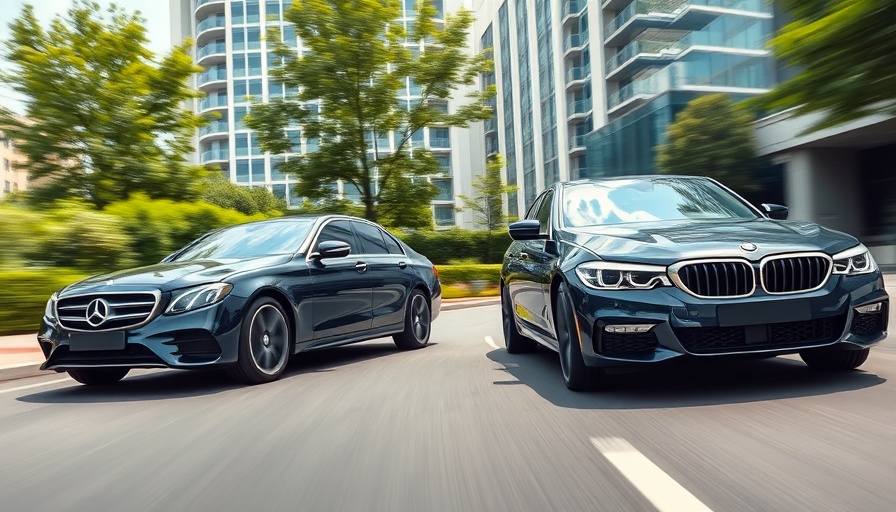
The Battle of Luxury Sedans: E-Class vs 5 Series
The automotive world has long been captivated by the ongoing rivalry between Mercedes-Benz and BMW, with the E-Class and 5 Series representing the pinnacle of luxury sedans. As consumer demands shift towards eco-friendliness, both cars now feature potent plug-in hybrid engines that not only deliver impressive performance but also toe the line of sustainability.
Engines and Efficiency: Who's More Eco-Friendly?
In today's eco-conscious market, the Mercedes E 300 e and BMW 530e bring impressive electrification to the table. The E-Class features a 2.0-liter four-cylinder engine paired with an electric motor for a combined output of 309 horsepower. It boasts a substantial battery allowing for over 60 miles of electric mobility, which may be critical for drivers looking to minimize their carbon footprint. Conversely, the BMW 530e lags slightly in combined output with 295 horsepower, but its hybrid system is designed for efficiency, making it a formidable contender.
Performance: Speed Meets Sophistication
When it comes to the driving experience, both sedans offer unique characteristics. The E 300 e leans towards comfort, gracefully navigating through bumps and providing a luxurious feel. Its nine-speed transmission shifts smoothly to enhance the driving dynamics, making it fitting for those who prefer a cushioned ride. On the other hand, the BMW 530e exudes the sporty performance expected from the brand. Its M Sport setup ensures sharp handling and tight steering, appealing to driving enthusiasts. However, be prepared for a somewhat stiffer ride, particularly at slower speeds.
Which Sedan Wins the Luxury Title?
Both the E-Class and 5 Series stand tall in the luxury sedan arena, each with its strengths. If you prioritize a plush and comfortable driving experience, the Mercedes E 300 e might be your best bet. But if sporty performance is your thing, the BMW 530e is designed for those who love to drive. Ultimately, the choice between these two iconic vehicles comes down to personal preferences regarding driving style and comfort needs.
As the future of automotive technology continues to evolve, it’s essential to consider how both cars integrate sustainability without compromising performance. Whether you lean toward the serenity of the Mercedes or the spirited nature of the BMW, both sedans illustrate where luxury and green technology converge.
 Add Row
Add Row  Add
Add 




Write A Comment